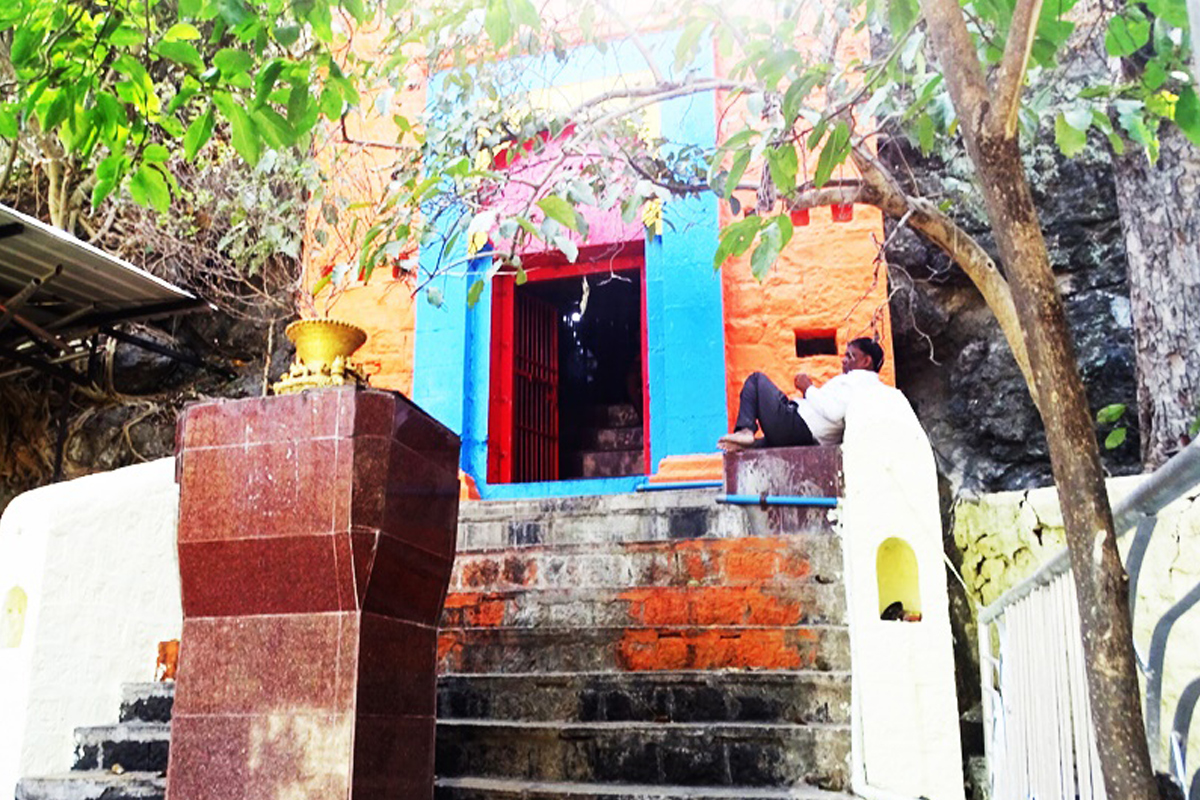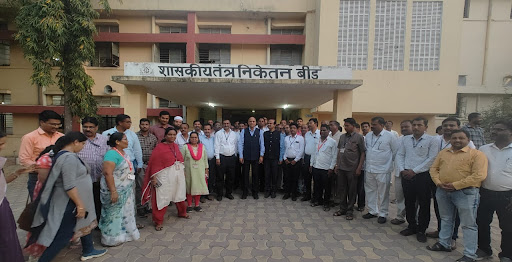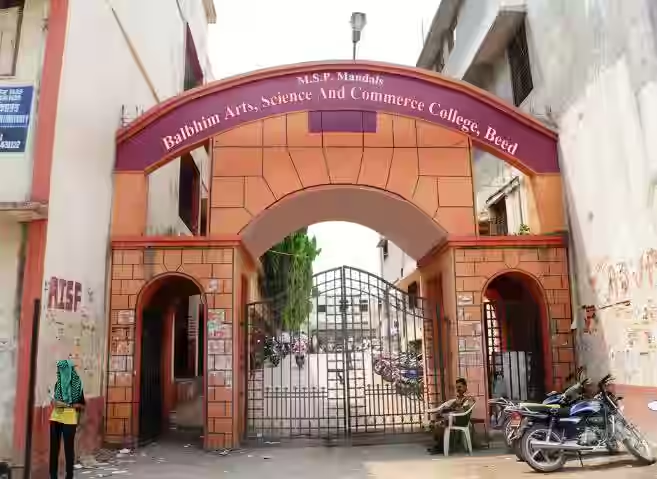Contents
- Early History
- Colonial History
- Post-Independence Era and Contemporary Educational Infrastructure
- Primary & Secondary Education
- Institutions of Higher Learning
- Yogeshwari Mahavidyalaya
- Government Polytechnic College
- Mrs.Kesharbai Sonajirao Kshirsagar Alias Kaku Arts Science and Commerce College
- Prominent Figures & Organizations
- Marathwada Shikshan Prasarak Mandal
- NGOs and Community-Based Education Efforts
- Karishmaa Care Foundation
- Graphs
- Enrollment and Dropout Rate
- A. Student Enrollment Numbers
- B. Student Enrollment (Class-Wise)
- C. Student Enrollment (Gender-Wise)
- D. Student Enrollment (By School Management Type)
- E. Drop Out Rate (By Schooling Level)
- F. Drop Out Rate (By Gender)
- Schools
- A. No. of Schools
- B. No. of Schools (Filtered by Gender Mix)
- C. No. of Schools (By School Management Type)
- Teachers
- A. No. of Teachers
- B. No. of Teachers (By School Management Type)
- C. No. of Teachers (Male vs Female)
- D. Education Level of Teachers
- Sources
BEED
Education
Last updated on 3 November 2025. Help us improve the information on this page by clicking on suggest edits or writing to us.
The educational framework of Beed aligns with the broader structure of the Indian education system, encompassing pre-primary, primary, secondary, and higher education. However, its history extends well beyond this contemporary structure. Interestingly, several influential figures in Marathi literature are associated with Beed, leading some to believe that the district may have once been a notable centre of learning.
The 19th century brought many changes in the district’s educational system as Western frameworks were introduced. British administrators and missionaries became actively involved in shaping education in the region. Additionally, as part of the Hyderabad State during this period, the district’s educational development was also influenced by the Nizams of Hyderabad. Later, the early 20th century saw a wave of local initiatives; its existence indicated an increasing public awareness regarding the importance of education. Local communities took charge of education, a movement that carried into the post-independence era, shaping the district’s educational landscape in lasting ways.
Early History
The documented history of education in Beed can be traced back to the 19th century. Before this era, information about educational centres in the district was sparse due to limited historical records. However, this does not imply that formal education was completely absent in the district. Interestingly, the presence of many prominent figures in Marathi literature during the medieval times has led some to believe that the district was a centre of learning in the past.
One such figure is Mukundraj, a significant contributor to Marathi literature and spiritual thought. He is best known for his work Vivekasindhu, a treatise on Advaita Vedanta, which is considered one of the earliest texts written in Marathi.

Another important figure who was based in the district is Sant Dasopant, a 15th-century Marathi saint, poet, and philosopher. He is celebrated for his contributions to Vedantic thought, the Bhakti movement, and his influential work, Pancheekaran, which explores many Vedantic principles.

He is also known for creating the Pasodi, a forty-foot-long cloth manuscript inscribed with his verses in a narrow, vertical margin. The Pasodi is divided into thirteen sections by red lines and includes illustrations of Vedantic ideas. It is regarded as a unique and significant document in Marathi literary history. A samadhi dedicated to him stands as both a religious and historical site in the district.
Colonial History
By the 19th century, the introduction of the Western education framework brought significant changes to the district, as British administrators and the Nizam’s government became actively involved in shaping its educational landscape.
The first state school was established in 1866, followed by the creation of Local Fund schools from 1888. By 1903, the district is recorded to have had 3 middle and 54 primary schools, with 3,383 students enrolled, only 44 of whom were girls.
In comparison to other places, Beed district appears to have seen limited educational development, as indicated in records from the Gazetteers. Literacy rates are documented to have remained low; in 1901, just 3% of the population was literate (5.9% of males and 0.05% of females).
The Nizam’s government later introduced many reforms at a broader level in the Hyderabad State, such as school inspections, grants-in-aid, and vocational training. Urdu-medium instruction and vocational education were also promoted in the 1930s and 1940s.
However, the Gazetteer (1969) notes that “the conditions prevailing in Bhir district…were not in keeping with the general progress of the region. While most of the other districts progressed, no substantial progress was visible in Bhir district.” According to the 1931 Census, Beed had only 29 literates per 1,000 persons, compared to figures from neighbouring districts such as Parbhani and Chhatrapati Sambhaji Nagar.
Post-Independence Era and Contemporary Educational Infrastructure
Following India's independence, the education system in the district underwent major transformations, driven by both state policies and local leadership. The introduction of structured education levels, pre-primary, primary, secondary, and higher education, along with the implementation of National Education Policies, has heavily shaped Beed’s educational landscape. Over the years, the sector expanded with contributions from both government-funded institutions and private organisations. Additionally, the introduction of various educational boards, each offering distinct curricula and standards, provided students with more choices and opportunities.
Primary & Secondary Education
During the colonial period, both public and private efforts in education primarily focused on primary and secondary schooling, as indicated by data from district Gazetteers across Maharashtra. Higher education remained underdeveloped in most districts, including Beed, with gradual improvements over time. While basic infrastructure for primary and secondary education existed, its expansion was closely tied to increasing enrollment and greater involvement of local figures.

Today, this expansion is evident in the widespread presence of schools across various wards of Beed, with available data reflecting the steady growth of educational institutions in both urban and rural parts of the district.
Institutions of Higher Learning
Perhaps one of the most notable changes in Beed’s educational landscape is tied to the establishment of higher education institutions. While primary and secondary schooling expanded steadily, opportunities for advanced education remained limited for much of the district’s history. Notably, it is mentioned in the district Gazetteer (1969) that, as of the early 1960s, “the district [had] no industrial and technical training institutions and colleges for medicine, law and engineering. College education in the faculties of Arts and Science is provided by only two colleges, one started in 1958, and the other in 1961.”
Over time, local leaders and organisations played a crucial role in addressing this gap, leading to the creation of several colleges. As a result, many institutions in the district today are privately managed, semi-private, or autonomous.
Yogeshwari Mahavidyalaya

Yogeshwari Mahavidyalaya is one of the oldest colleges in Beed district. The institution offers a wide range of programs across disciplines such as arts, science, commerce, engineering, pharmacy, law, and education.
Government Polytechnic College
Government Polytechnic College, established in 1983, is one of the oldest government institutions in Beed district, focused on technical and vocational education. The college offers education and training in various technical fields, contributing to the development of skilled professionals in the region.

Mrs.Kesharbai Sonajirao Kshirsagar Alias Kaku Arts Science and Commerce College
Mrs. Kesharbai Sonajirao Kshirsagar Alias Kaku Arts, Science, and Commerce College was established in honour of the late Kesharbai Sonajirao Kshirsagar, a prominent politician and sarpanch. The college, affiliated with Dr. Babasaheb Ambedkar Marathwada University, Chhatrapati Sambhaji Nagar, is dedicated to providing higher education to rural youth.

Alongside these institutions, many more colleges and universities operate across the district, offering programmes in a range of fields. However, while one can see here that higher education opportunities have expanded since the post-independence days, geographic disparities appear to persist, with urban centers having better access to institutions compared to rural areas.
Prominent Figures & Organizations
Marathwada Shikshan Prasarak Mandal
Marathwada Shikshan Prasarak Mandal was founded in 1959 in Chhatrapati Sambhaji Nagar by Hon. Shri Vinayakrao Patil and Hon. Shri V. R. Sawant. The organization's primary goal is to provide educational opportunities to underprivileged communities, guided by its motto, “तमसो मा ज्योतिर्गमय” ("Let all proceed from darkness to light"). Since its inception, the Mandal has grown significantly and expanded its reach, particularly in areas like Beed.

A notable contribution of the Mandal came in the 1960s with the establishment of Balbhim Arts, Science, and Commerce College in Beed. This college became one of the first to be established in the district and played a key role in expanding higher education opportunities in the region.
NGOs and Community-Based Education Efforts
Education has been a key driver of social reform, particularly in addressing inequality and expanding access to learning. While formal institutions provide structured education, many communities continue to face barriers due to poverty, social stigma, or lack of resources. To address these challenges, various organisations in Beed have focused on community-based education initiatives, with each working to tackle specific social challenges present in the district.
Karishmaa Care Foundation
The Karishmaa Care Foundation, founded in 2015 by Neelam Tuteja, operates in rural Maharashtra and urban slum areas, with a focus on improving access to education for girls. In the Beed district and surrounding regions of Marathwada, the foundation has undertaken initiatives aimed at supporting children from economically disadvantaged backgrounds.
The organisation provides educational kits that include a full year’s supply of notebooks and stationery, three sets of new clothes, shoes, slippers, and grains for a year, aiming to address both academic and basic material needs. While education remains the core focus, the foundation also works in areas related to health and community welfare.
Graphs
Enrollment and Dropout Rate
Schools
Teachers
Sources
Anjali Shetty. 2018. “Pune-Based Enthusiasts Come Together to Provide Educational Support to Rural Children.” Hindustan Times.https://www.hindustantimes.com/pune-news/pun…
Dasopant. Dattamaharaj.com. Accessed 27 June, 2025.http://www.dattamaharaj.com/%E0%A4%A6%E0%A4%…
Government of Maharashtra. 1969. Maharashtra State Gazetteers: Bhir District. Directorate of Govt. Printing, Bombay.
Government Polytechnic, Beed. “About the Institute.” Government Polytechnic Beed Official Website.http://www.gpbeed.ac.in/#:~:text=Government%…
https://archive.org/details/in.ernet.dli.2015.11519https://archive.org/details/in.ernet.dli.201…
Imperial Gazetteer Of India. 1909. Provincial Series: Hyderabad State. Superintendent of Government Printing, Kolkata.
K.S.K. College Beed. “College Profile & Founders.” K.S.K. College Beed Official Website.https://www.kskcollegebeed.com/college-profi…
M.S.P. Mandal Beed. “About Balbhim College.” M.S.P. Mandal Beed Official Website.https://www.mspmbeed.com/about-balbhim-colle…
Wikipedia Contributors. Mukundraj. Wikipedia. Accessed 27 June 2025.https://en.wikipedia.org/wiki/Mukundraj
Last updated on 3 November 2025. Help us improve the information on this page by clicking on suggest edits or writing to us.